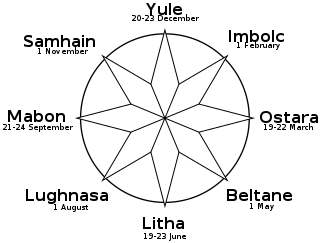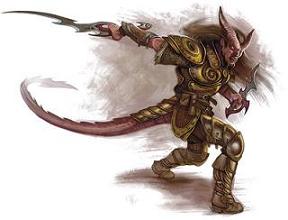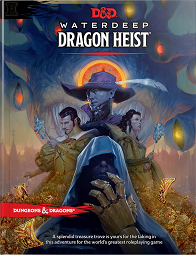A solstice is an event occurring when the Sun appears to reach its most northerly or southerly excursion relative to the celestial equator on the celestial sphere. Two solstices occur annually, around June 21 and December 21. In many countries, the seasons of the year are determined by reference to the solstices and the equinoxes.

Summer is the hottest of the four temperate seasons, falling after spring and before autumn. At or around the summer solstice, the earliest sunrise and latest sunset occurs, the days are longest and the nights are shortest, with day length decreasing as the season progresses after the solstice. The date of the beginning of summer varies according to climate, tradition, and culture. When it is summer in the Northern Hemisphere, it is winter in the Southern Hemisphere, and vice versa.

The Wheel of the Year is an annual cycle of seasonal festivals, observed by many modern Pagans, consisting of the year's chief solar events and the midpoints between them. While names for each festival vary among diverse pagan traditions, syncretic treatments often refer to the four solar events as "quarter days" and the four midpoint events as "cross-quarter days", particularly in Wicca. Differing sects of modern Paganism also vary regarding the precise timing of each celebration, based on distinctions such as lunar phase and geographic hemisphere.
Forgotten Realms is a campaign setting for the Dungeons & Dragons (D&D) fantasy role-playing game. Commonly referred to by players and game designers alike as "The Realms", it was created by game designer Ed Greenwood around 1967 as a setting for his childhood stories. Several years later, Greenwood brought the setting to publication for the D&D game as a series of magazine articles, and the first Realms game products were released in 1987. Role-playing game products have been produced for the setting ever since, as have various licensed products including novels, role-playing video game adaptations, and comic books. The Forgotten Realms is one of the most popular D&D settings, largely due to the success of novels by authors such as R. A. Salvatore and numerous role-playing video games, including Pool of Radiance (1988), Eye of the Beholder (1991), Baldur's Gate (1998), Icewind Dale (2000), Baldur's Gate II: Shadows of Amn (2000), and Neverwinter Nights (2002).
In British and Irish tradition, the quarter days were the four dates in each year on which servants were hired, school terms started, and rents were due. They fell on four religious festivals roughly three months apart and close to the two solstices and two equinoxes.

Ed Greenwood is a Canadian fantasy writer and the original creator of the Forgotten Realms game world. He began writing articles about the Forgotten Realms for Dragon magazine beginning in 1979, and subsequently sold the rights to the setting to TSR, the creators of the Dungeons & Dragons roleplaying game, in 1986. He has written many Forgotten Realms novels, as well as numerous articles and D&D game supplement books.

Spring, also known as springtime, is one of the four temperate seasons, succeeding winter and preceding summer. There are various technical definitions of spring, but local usage of the term varies according to local climate, cultures and customs. When it is spring in the Northern Hemisphere, it is autumn in the Southern Hemisphere and vice versa. At the spring equinox, days and nights are approximately twelve hours long, with daytime length increasing and nighttime length decreasing as the season progresses.
Menzoberranzan, the "City of Spiders", is a fictional city-state in the world of the Forgotten Realms, a Dungeons & Dragons campaign setting. The city is located in the Upper Northdark, about two miles below the Surbrin Vale, between the Moonwood and the Frost Hills. It is famed as the birthplace of Drizzt Do'Urden, the protagonist of several series of best-selling novels by noted fantasy author R. A. Salvatore. Menzoberranzan has been developed into a video game and a tabletop RPG setting. Menzoberranzan has been described as "a perfect unjust state" and compared to Glaucon's vision of a state that is held together only by the fear of retribution.
Faerûn is a fictional continent, the primary setting of the Dungeons & Dragons world of Forgotten Realms. It is described in detail in several editions of the Forgotten Realms Campaign Setting with the most recent being the 5th edition from Wizards of the Coast, and various locales and aspects are described in more depth in separate campaign setting books. Around a hundred novels and several computer and video games use the Faerûn setting.

The tiefling is a fictional humanoid race in the Dungeons & Dragons (D&D) fantasy roleplaying game. Originally introduced in the Planescape campaign setting in the second edition of Advanced Dungeons & Dragons, they became one of the primary races available for player characters in the fourth edition of the game.
The Time of Troubles, also known as the Arrival, Godswar, and Avatar Crisis, is a fictional time period in the chronology of the Forgotten Realms campaign setting of the Dungeons & Dragons fantasy role playing game. Taking place during the Year of Shadows, 1358 DR, the Time of Troubles was a cataclysmic period during which the gods of Faerûn were forced to walk the earth in their mortal avatar forms. However, unlike when a god usually sends an avatar and its true form resides usually on one of the Outer Planes, the gods were all demoted and this was the only form they had at the time, making them very vulnerable. Several major deities died during the Time of Troubles, and a handful of mortals rose to divinity.
Mystra is a fictional goddess in the Forgotten Realms campaign setting for the Dungeons & Dragons fantasy role-playing game.
Waterdeep is a fictional city-state that forms part of a Dungeons & Dragons fantasy role-playing game campaign setting called the Forgotten Realms. It is a port city along the western coast of the Faerûn sub-continent. Known as the "City of Splendors", Waterdeep is one of the largest and busiest cities and one of the most important political powers on the continent. The population is primarily human although other races dwell therein. The city government consists of a cryptocracy of mostly anonymous individuals known as the Masked Lords of Waterdeep.

Neverwinter is a fictional city-state in the Forgotten Realms campaign setting for the Dungeons & Dragons fantasy role-playing game. Neverwinter was founded by Lord Halueth Never. It sits on the northwestern coast of the subcontinent of Faerûn.

The March equinox or Northward equinox is the equinox on the Earth when the subsolar point appears to leave the Southern Hemisphere and cross the celestial equator, heading northward as seen from Earth. The March equinox is known as the vernal equinox in the Northern Hemisphere and as the autumnal equinox in the Southern.

James Wyatt is a game designer and a former United Methodist minister. He works for Wizards of the Coast, where he has designed several award-winning supplements and adventures for the Dungeons & Dragons (D&D) roleplaying game. He is the author of several sci-fi and fantasy novels, including several Forgotten Realms books, and the 4th edition Dungeon Master's Guide.

Rob Heinsoo is an American tabletop game designer. He has been designing and contributing to professional role-playing games, card games, and board games since 1994. Heinsoo was the lead designer on the 4th Edition of Dungeons & Dragons (2008), and is co-designer of the 13th Age roleplaying game along with Jonathan Tweet. He has also designed and contributed to role playing, miniatures and card games, and a computer game.

The summer solstice or estival solstice, also known as midsummer, occurs when one of the Earth's poles has its maximum tilt toward the Sun. It happens twice yearly, once in each hemisphere. For that hemisphere, the summer solstice is when the Sun reaches its highest position in the sky and is the day with the longest period of daylight. Within the Arctic circle or Antarctic circle, there is continuous daylight around the summer solstice. On the summer solstice, Earth's maximum axial tilt toward the Sun is 23.44°. Likewise, the Sun's declination from the celestial equator is 23.44°.
A season is a division of the year marked by changes in weather, ecology, and the amount of daylight. On Earth, seasons are the result of Earth's orbit around the Sun and Earth's axial tilt relative to the ecliptic plane. In temperate and polar regions, the seasons are marked by changes in the intensity of sunlight that reaches the Earth's surface, variations of which may cause animals to undergo hibernation or to migrate, and plants to be dormant. Various cultures define the number and nature of seasons based on regional variations.

Waterdeep: Dragon Heist is an adventure module for the 5th edition of the Dungeons & Dragons fantasy role-playing game. It is the first part of the Waterdeep storyline and followed by a second adventure, Waterdeep: Dungeon of the Mad Mage.









